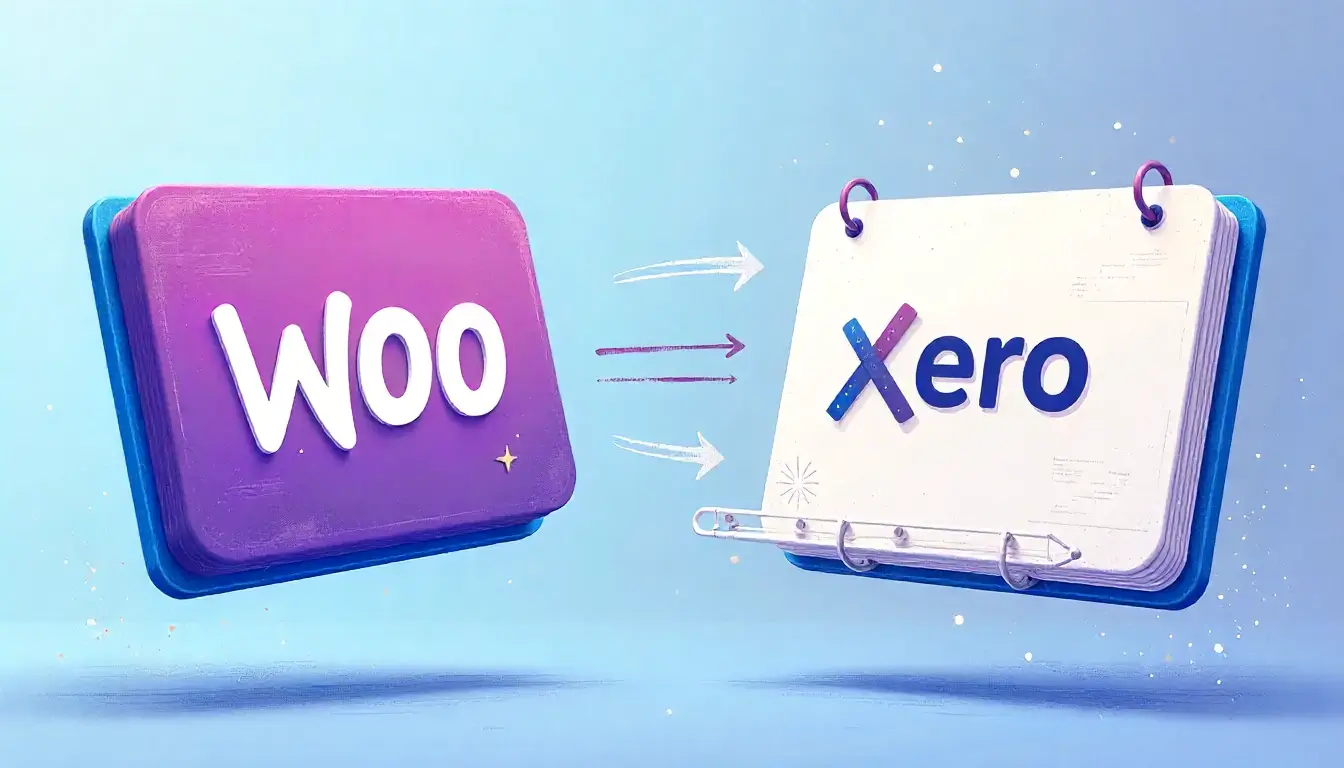This comprehensive 2025 guide explains how to integrate WooCommerce and Xero using the best plugins, automation platforms, and accounting sync tools. Whether you want to automate order syncing, inventory updates, payment reconciliation, or tax mapping, this article covers everything you need.
You will also find comparison tables, pricing breakdowns, setup steps, and answers to common questions like Does WooCommerce integrate with Xero? and How to fix Xero WooCommerce login errors?
Introduction
For ecommerce business owners, handling accounting manually can be stressful and time‑consuming. WooCommerce provides a powerful storefront, while Xero delivers seamless cloud accounting. When you combine both using the right tools, you can automate nearly 90% of your bookkeeping.
In 2025, the demand for Xero WooCommerce automation has surged because of growing online sales and tax complexities. The modern ecommerce store now relies on real‑time data syncing—orders, refunds, payments, fees, shipping charges, and inventory levels.
This article focuses on:
- The best WooCommerce + Xero plugins for 2025
- Inventory and order sync options
- Pricing and feature comparisons
- How to use MyWorks Xero, Zapier WooCommerce Xero, and Xero API integrations
- WordPress setup tips and common troubleshooting
- Featured snippet breakdowns to help you understand each tool
What Is WooCommerce–Xero Integration?
WooCommerce–Xero integration is a process that automatically connects your online store with Xero accounting, allowing automatic syncing of:
- Orders
- Products
- Inventory
- Customers
- Taxes
- Shipping charges
- Transaction fees
- Payment methods
This reduces errors, improves financial reporting, and ensures your books are always accurate.
Does WooCommerce integrate with Xero?
Yes, WooCommerce integrates with Xero using third‑party plugins such as MyWorks Xero, Zapier, WooCommerce Xero inventory sync tools, and custom Xero API integrations. These tools automate orders, payments, taxes, refunds, and inventory management.
Best WooCommerce + Xero Sync Tools (2025)
Below is an updated list of the top tools for syncing WooCommerce with Xero:
- MyWorks Xero Sync
- Zapier WooCommerce → Xero Automation
- Official WooCommerce Xero Add‑on (Legacy)
- Xero API Custom Integration
- Xero Integrations via Make (Integromat)
- Inventory Sync Tools (DEAR, Unleashed, Cin7)
Comparison Table: Best WooCommerce + Xero Plugins (2025)
| Plugin / Tool | Best For | Pricing (2025) | Key Features | Difficulty |
|---|---|---|---|---|
| MyWorks Xero | Full automation & 2‑way sync | $29–$199/month | Order sync, inventory sync, customers, payments, taxes, refunds | Easy |
| Zapier WooCommerce → Xero | Custom workflows | $19–$69/month | Automations using triggers/actions | Medium |
| WooCommerce Xero Add‑on (Legacy) | Basic order syncing | One‑time $79 | Simple invoice creation | Easy |
| Custom Xero API Integration | Enterprise‑level control | Developer‑based | Full customization, advanced mappings | Hard |
| Make (Integromat) | Visual automation | $10–$29/month | Multi‑platform workflows | Medium |
1. MyWorks Xero: The Most Popular WooCommerce Xero Plugin
MyWorks Xero is the widely preferred tool because it offers true real‑time syncing.
Key Features
- Real‑time order syncing
- Full WooCommerce Xero inventory sync
- Product mapping tools
- Two‑way sync
- Automatic tax mapping
- Syncs shipping, fees, and refunds
Pricing
- Starter: $29/month
- Growth: $59/month
- Scale: $199/month
Advantages
- Best for medium to large stores
- No manual bookkeeping
- Fast installation process
2. Zapier WooCommerce Xero Integration
If you need automation without a plugin, Zapier is the most flexible solution.
What You Can Automate Using Zapier
- Send WooCommerce orders to Xero
- Create invoices automatically
- Map taxes and shipping
- Update customer details
- Trigger workflows based on order status
Popular Zaps
- WooCommerce → Xero Invoice
- WooCommerce → Xero New Contact
- WooCommerce → Xero Payment Record
3. WooCommerce Xero Add‑on (Legacy Plugin)
Although not updated frequently, many store owners still use it.
Pros
- One‑time payment
- Simple setup
Cons
- No inventory sync
- Limited features
- Not recommended for large stores
4. Custom Xero API Integrations
Large enterprises often rely on Xero API for custom automation.
What You Can Build
- Multi‑store inventory sync
- Custom reporting dashboards
- Advanced invoicing workflows
- Integration with ERP tools
This solution is best for advanced teams with developers.
5. Xero Integrations Using Make (Integromat)
Make allows visual workflow creation.
Benefits
- No coding
- Multi‑step workflows
- Supports multiple platforms in one flow
Use Cases
- Sync WooCommerce → Xero → Slack
- Create inventory alerts
- Auto‑generate profit reports
WooCommerce Xero Inventory Sync: Why It Matters
Real‑time inventory management prevents overselling and helps maintain accurate profit margins.
Inventory Sync Tools
- MyWorks
- Cin7
- DEAR Systems
- Unleashed
List of Common Xero WooCommerce Issues (with Fixes)
1. Xero WooCommerce Login Error
Solution: Reset API keys and reconnect the plugin.
2. Orders Not Syncing
Solution: Verify webhook triggers in WooCommerce.
3. Incorrect Tax Mapping
Solution: Update tax classes in WooCommerce and match them in Xero.
4. Duplicate Invoices
Solution: Disable multiple automation tools running at the same time.
Setup Guide: How to Connect WooCommerce + Xero
- Choose a sync tool (MyWorks, Zapier, Make, or API)
- Install and activate the plugin
- Enter Xero API keys
- Set up product and tax mapping
- Enable order, payment, and inventory sync
- Test the connection
- Automate daily accounting
Why WooCommerce + Xero Is Essential in 2025
- Saves time
- Reduces errors
- Eliminates manual data entry
- Helps scale your store
- Provides real‑time financial insights
Conclusion
A proper WooCommerce + Xero integration can fully automate your store’s accounting workflow. The right tools—such as MyWorks Xero or Zapier—help sync orders, inventory, payments, and taxes smoothly. Whether you’re running a small business or an enterprise‑level ecommerce store, this guide provides everything you need to make an informed decision.
Integrate WooCommerce with Xero today and streamline your financial operations for 2025 and beyond.


